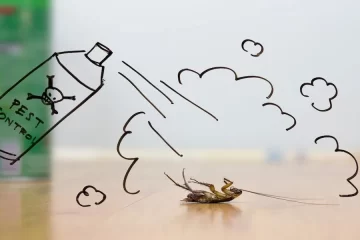Is It Safe To Sleep In A Water Damaged House?

Many things can cause water damage at home. These include plumbing or roof leaks, broken appliances in the home, and natural calamities like floods and landslides. Although the immediate concern may be the damage to your property, you should also consider if it’s safe to sleep at home after a flood. This article will look at the risks that come with water damage. We’ll also discuss potential health issues and why water damage restoration services are important to ensure a healthy living environment.
What Are The Immediate Risks Of Water Damage?
When water leaks into your home, structural damage can occur immediately. The extent of damage depends on water amount, exposure time, and material affected. Common immediate risks include the following:
- Electrical Risks: Water and electric current are a deadly combination. Water can create electrical shorts, which may lead to electric shocks or fires. You must turn off the power and let a professional examine the electrical system.
- The Integrity Of The Structure: Water can weaken elements like walls, ceilings, floors, and floorboards. Long-term exposure can result in sagging walls, floors, and ceilings or even collapse. For safety, it is vital to assess structural damage.
- Slippery Floors: Wet flooring can be extremely slick, increasing the risks of accidents and falls. It is best to avoid walking on surfaces that are wet until the moisture has been removed.
Health Hazards Of Water Damage
Aside from the immediate physical dangers that water damage presents, it also poses serious health hazards. These risks arise from mold growth, bacterial contamination,, and the release of potentially harmful chemicals.
- The Mildew. In damp environments, mold spores are attracted to moisture and can begin growing within 24 hours to 48 after exposure. It can also lead to other health problems in those who suffer from asthma or have weakened immunity systems. Black mold, in particular, is toxic.
- The Bacterial Contamination: Water brought in from outside, like floods, may contain bacteria or other pathogens. Even clean water becomes contaminated if dirt, debris, or organic matter comes into contact. Exposed to these pathogens, infections and illnesses can occur.
- Chemistry Hazards: Water damage could cause chemicals in your home to mix and produce dangerous fumes or reactions. Also, when building materials are wet (such as insulation and drywall), they can release harmful chemicals.
Is It Safe For Me To Sleep In An Aquifer-Damaged Home?
A water-damaged house is generally unsafe to sleep in until it has received the proper water-damage repair services. Here’s why:
- Air Quality: Mold spores can compromise the indoor air, causing respiratory problems and health issues. This is especially concerning when exposed to the air for a long time, such as during sleep.
- Safety: If your home’s structural integrity or safety has been compromised, there is an increased risk of collapse. Before returning to your regular activities, ensure that all structural aspects are secure.
- Impact on the Mind: The knowledge that you have a home in danger can lead to anxiety and stress. These feelings can interfere with sleep and affect your overall well-being.
How to Deal with Water Damage?
In your house, water damage may be a major issue. If you notice any signs of it, take action immediately to ensure that the environment is safe. Here are some steps you need to follow:
- Get out if necessary: If there is significant water damage in the home, find temporary accommodations until it is safe to return.
- Turning Off Utilities: This will prevent further damage and reduce the risks of electrical hazards.
- Documentation: Take photos or videos of damage for insurance. You can claim insurance and receive compensation if you have detailed documentation.
- Remove standing water and dry: Use pumps, wet vacs, and humidifiers to eliminate moisture. Professional water damage repair services use high-grade industrial equipment to expedite the process.
- Check for mold: Even after removing water from the area, mold can still grow. An inspection by a professional is necessary to determine and correct mold growth.
- Repair and restore: Once the area is safe and dry, begin repairs. Replace damaged drywalls, flooring, insulation, and other materials.
- Improve Future Resistance: Protect your home from future water damage. Consider installing sump tanks, improving drainage, or sealing cracks at the foundation.
Conclusion
In order to avoid health and security risks, sleeping inside a water-damaged home is not advisable. To reduce the risks of water damage and make your home habitable, it’s important to take action immediately. You are protecting your health and the home’s safety by taking the proper steps to mitigate the dangers.











